The Sponges. Yes, Porifera animals are called as the sponges. Because back in time when synthetic sponges didn’t take over the market. These underwater immobile animals are harvested to be used by humans for cleaning.
These sponges were taken out of their homes, That is the base of the ocean, clean and dry.
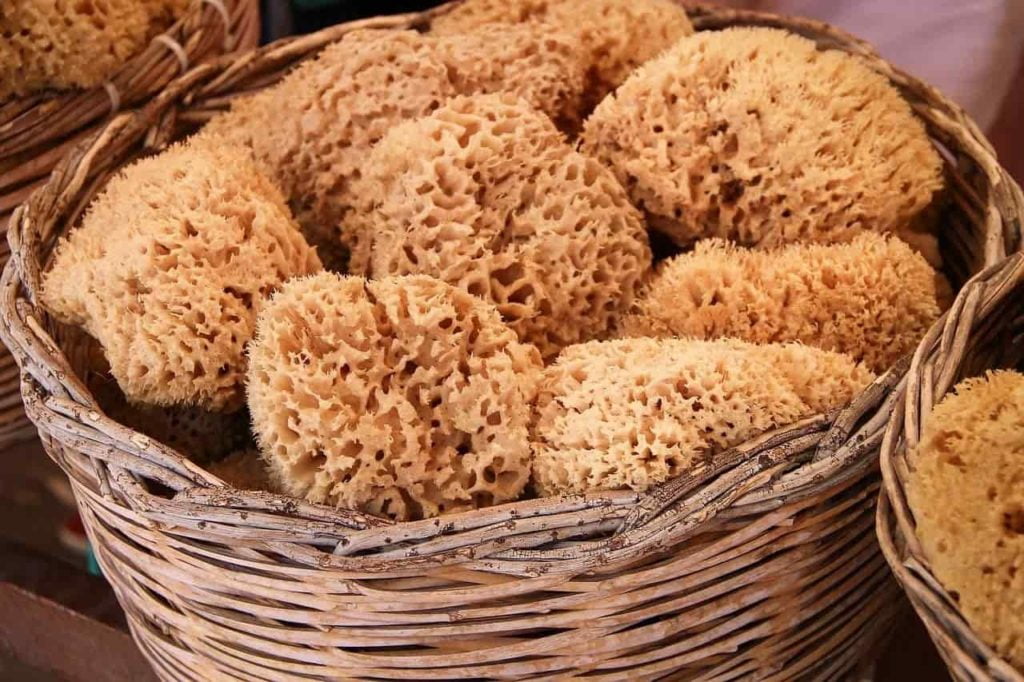
When you will have a glance at them you will see these animals are vividly coloured and highly porous.
A phylum whose animals are well known for their regenerative powers (regeneration: building entire body from any of its broken strand/body part) and from their immensely porous body to wonderful canal system, from being recognized as the most primitive animal phyla to showing both sexual and asexual type of reproduction.
The more I say the lesser it feels.
Strange yet beautiful. They look like plants or sometimes indistinguishable from stones.
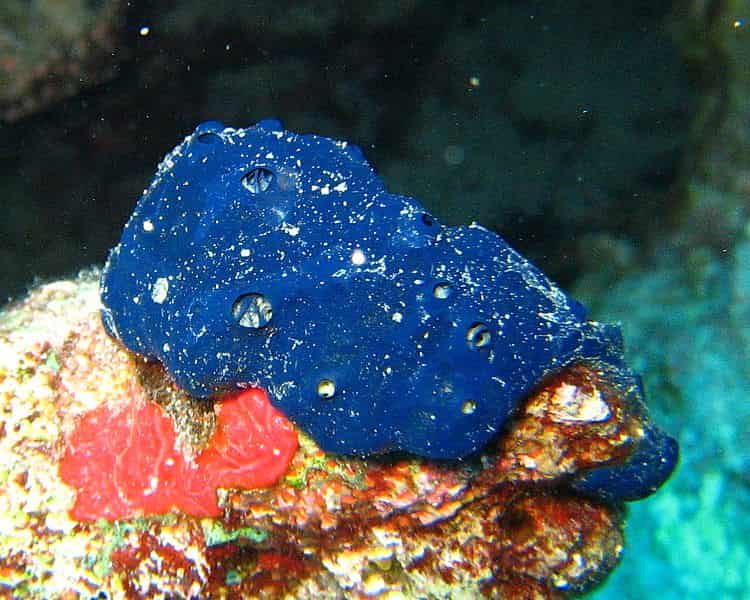
(Yes, this blue one, it is a sponge). But are actually living creatures with an extensive canal system that offers them a mode for having their food, for excretion of their body’s wastes products, and also the dispersal of their sex cells (sperms).
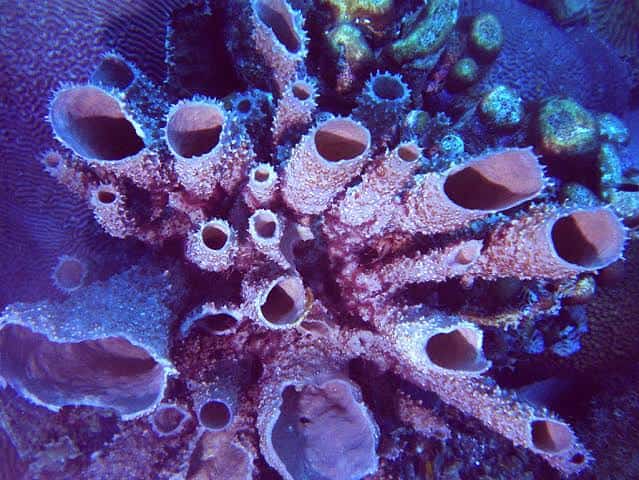
To achieve this wonderful canal system the sponge’s body increases its surface area to many folds and hence creates a large area for the exchange of substances.
Choanocytes (Collar Cells) : The Current Creators
By current creators, I mean Water Current Creators. You can see an elaborate water filter system in the sponges. This elaborate filter system is achieved by a special kind of cell called collar cells or choanocytes. These cells are present covering the internal most surface of the finger-like projections present inside the sponge.
These cells have a cell body that is circular, almost spherical in shape, and attached to it is a funnel-like structure called a collar, essentially made by various microvilli and at the center of this collar-like structure is a flagellum which is actually responsible for creating the water current.
The cell body of these collar cells contains food vacuole. So, the food ingested by the cells is stored here in the food vacuoles of Choanocytes.
These choanocytes have many functions and support the life of these benthic creatures by creating water current which is an aid in reproduction, excretion, and also in food ingestion.
A detailed glance over the dynamic canal system in sponges:
The body cavities through which water enters and from the time of its entry up till its exit from osculum it nourishes the sponge, such system from which water current flows is called a canal system.
Broadly speaking three types of canal systems are seen:
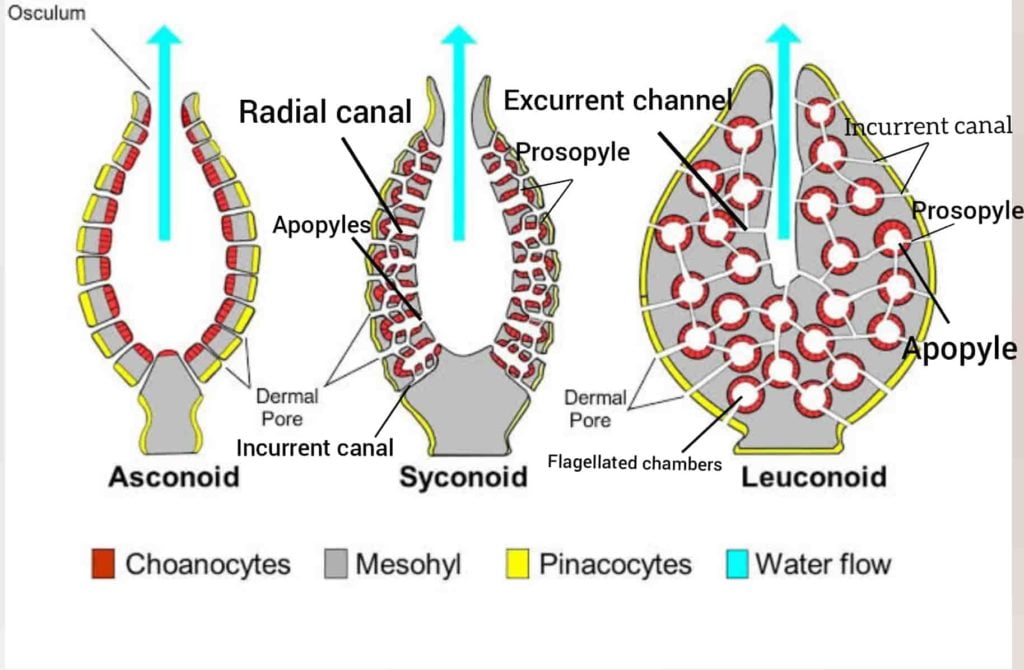
Asconoid type:
⦁ Simplest of all types
⦁ The animal having this canal system shows a vase-like body consisting of a large body cavity called spongocoel and an exit point for water current, a narrow opening called the osculum.
⦁ Epidermis (outer layer cells) have a single layer of flat cells.
⦁ Inner epithelium lining (lining of spongocoel) is made up of choanocytes.
⦁ The middle layer contains skeletal spicules and a gelatinous matrix.
⦁ The outer wall is perforated with various pores that allow entry of water called Ostia (extend from the external surface up to spongocoel).
⦁ The flow of water current is as :

Syconoid type:
⦁ Formed by outpouching the asconoid type of wall at regular intervals in finger-like projections, called radial canals.
⦁ No direct incurrent channels. Water enters through dermal pores.
⦁ The walls of radial canals fuse in such a way that they make incurrent canals at regular intervals.
⦁ Radial canals being the outpouchings of spongocoel, hence are lined by choanocytes (flagellated cells)
⦁ The interior is hollow and forms a large spongocoel.
⦁ The opening of radial canal into spongocoel is termed as internal Ostia.
⦁ They retain the vase like shape as that of Asconoid sponges.
⦁ Spongocoel opens into single terminal osculum.
⦁ The wall between the incurrent canal and radial canal has small pours/ routes that connect both radial and incurrent canal, these are called as prosopyles.
⦁ The flow of water current is as follows:

Leuconoid type:
⦁ The choanocyte layer of the radial canal seen in syconoid type evaginates into many small chambers. The choanocytes are just seen in these chambers.
⦁ Mesenchyme fills the space around the flagellated chambers.
⦁ Due to this extensive evagination, the spongocoel is obliterated and the sponge becomes irregular in structure.
⦁ Sponge’s internal now has many incurrent and excurrent canals which all lead to the large oscula.
⦁ The external surface has many pores called Dermal Ostia.
⦁ The flow of water current is as:

References:
Invertebrate zoology by E.L. Jordan and Dr. P.S. Verma
One fun fact :
The TV cartoon series SpongeBob Square Pants which aired the first time in July 1999 was actually created by a Marine science educator Stephan Hillenburg and is an adaptation of his unpublished book The Intertidal Zone.
The lead character SpongeBob is a cartoon adaptation of these Sponges. ☺️

All the images are non-copyright and has right to use.

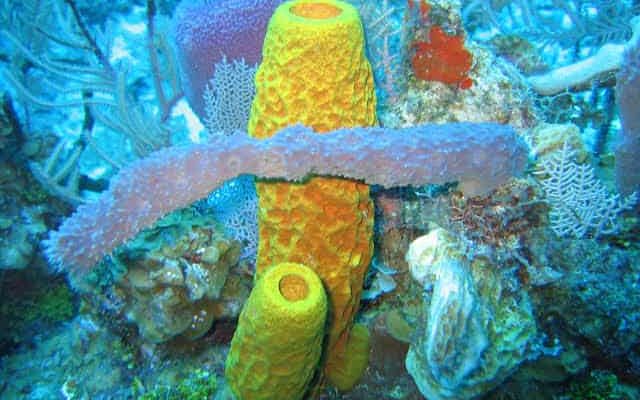
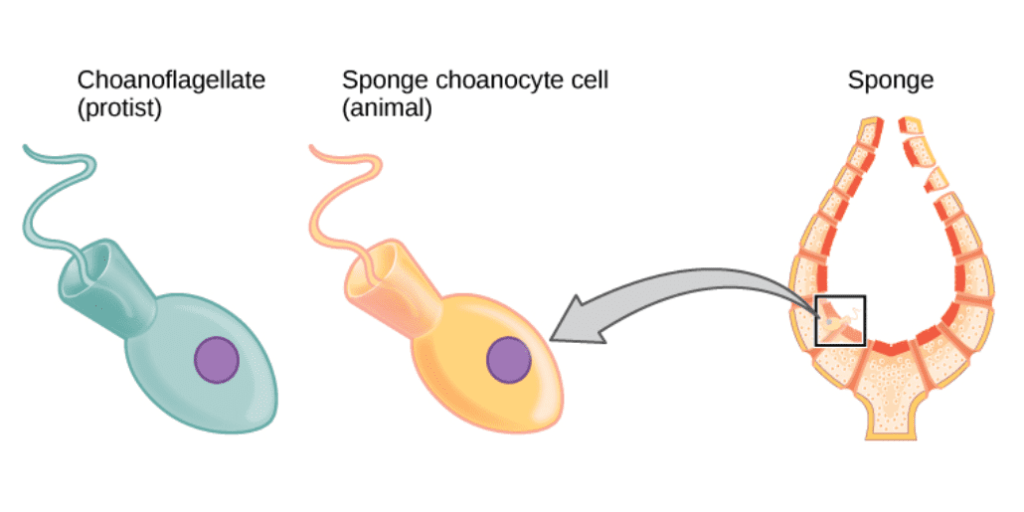
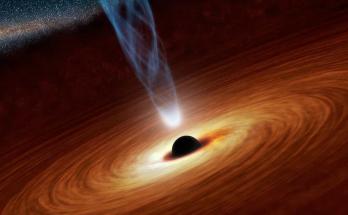


Great post! Very informative! 😍👍
Thankyou 🙂